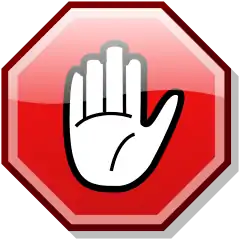3e SRD:Movement, Position, and Distance
Tactical Movement
Use tactical speed for combat.
Hampered Movement
Obstructions, bad surface conditions, or poor visibility can hamper movement. The DM determines the category that a specific condition falls into (see Table: Hampered Movement). When movement is hampered, multiply the standard distance by the movement penalty (a fraction) to determine the distance covered.
If more than one condition applies, multiply the normal distance covered by all movement penalty fractions that apply.
Movement in Combat
A character can move up to double base speed.
The space where a character begins the move is not considered threatened, and therefore enemies do not get attacks of opportunity for a character's move from that space.
Movement Modes
Some creatures have other modes of movement.
Burrow
The creature can tunnel through dirt, but not through rock unless the descriptive text says otherwise. Creatures cannot use the run action while burrowing.
Climb
A creature with a climb speed has the Climb skill at no cost and gains a +8 racial bonus to all Climb checks. The creature must make a Climb check to climb any wall or slope with a DC of more than 0, but it always can choose to take 10, even if rushed or threatened while climbing. The creature climbs at the listed speed while climbing. If it chooses an accelerated climb, it moves at double the listed climb speed (or its normal land speed, whichever is less) and makes a single Climb check at a -5 penalty. Creatures cannot use the run action while climbing.
Fly
The creature can fly at the listed speed if carrying no more than a medium load. All fly speed include a parenthetical note indicating maneuverability, as follows.
- Perfect: The creature can perform almost any aerial maneuver it wishes.
- Good: The creature is very agile in the air (like a housefly or hummingbird), but cannot change direction as readily as those with perfect maneuverability.
- Average: The creature can fly as adroitly as a small bird.
- Poor: The creature flies as well as a very large bird.
- Clumsy: The creature can barely fly at all.
Creatures can use the run action while flying, provided they run in a straight line.
Swim
A creature with a swim speed can move through water at the listed speed without making Swim checks. It gains a +8 racial bonus to any Swim check to perform some special action or avoid a hazard. The creature always can choose to take 10, even if rushed or threatened when swimming. Creatures can use the run action while swimming, provided they swim in a straight line.
Big and Little Creatures in Combat
| Size | AC/Attack Modifier |
|---|---|
| Fine | +8 |
| Diminutive | +4 |
| Tiny | +2 |
| Small | +1 |
| Medium | 0 |
| Large | -1 |
| Huge | -2 |
| Gargantuan | -4 |
| Colossal | -8 |
Apply this modifier to the attack rolls and AC values of characters, unless the value has not already been precalculated to include this modifier.
Face
How much area a character occupies in combat. Face is essentially the border between the square or rectangular space that a character occupies and the space next to it. These faces are abstract, not "front, back, left, and right," because characters are constantly moving and turning in battle. Unless a character is immobile, it practically doesn't have a front or a left side—at least not one that can be identified on the tabletop.
Back to Main Page → 3e Open Game Content → System Reference Document → Combat

